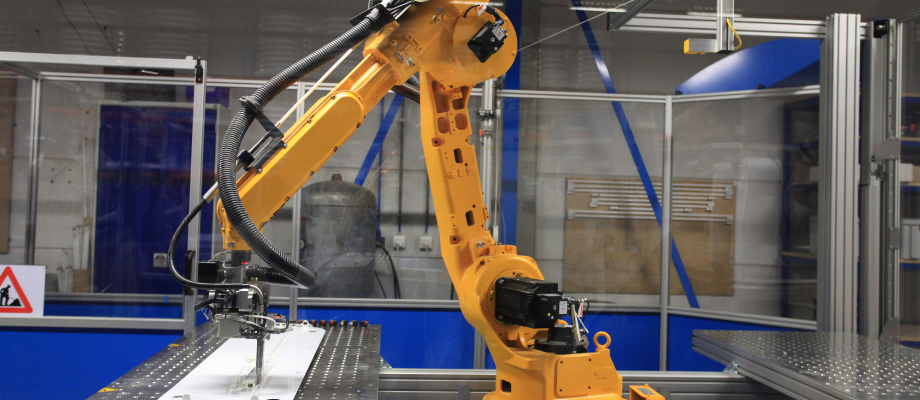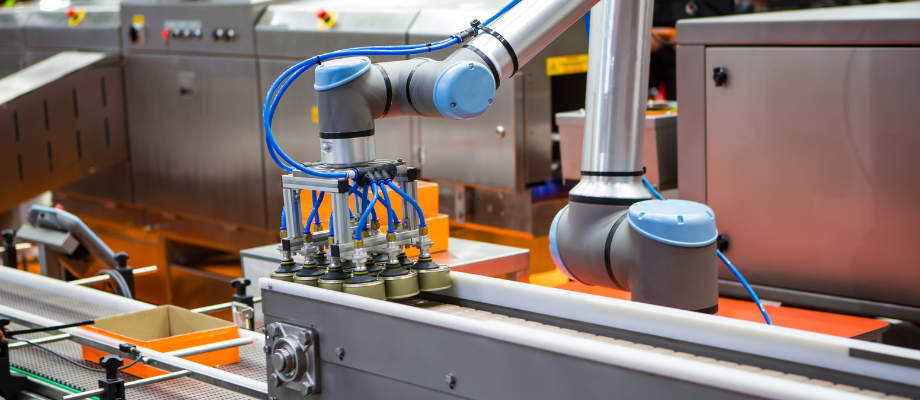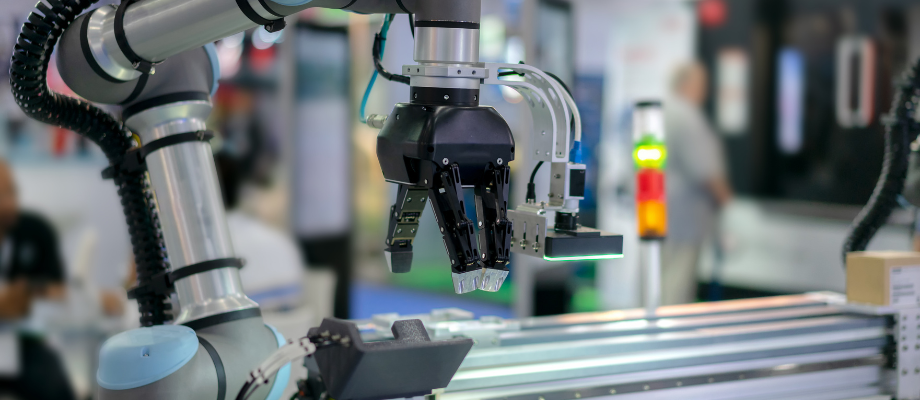Robotics engineer


Modern industry is changing rapidly thanks to technological advances. Among them, the robotics stands out, placing therobotic engineer at the heart of innovation. Whether in theaeronautical, theagri-food, aerospace Or the mechanics, the robotic engineer designs and optimizes robotic systems complexes. In this article, let's discover this key job in the industry.
I - The role of the robotic engineer
What is a robotic engineer?
THErobotic engineer is a professional specialized in the design, development, and maintenance of robotic systems. He is brought to intervene at all stages of the life cycle of a robotic system, from design to maintenance, including development and integration. Working in various industrial sectors, he is at the heart ofinnovation technological, creating advanced solutions to improve business efficiency and productivity.
Technical skills and soft skills required
To exercise this profession, the robotic engineer must have a set of technical skills pointed, acquired in particular by joining an engineering school specialized. Skills in mechanics, electronics, industrial computing and Mechatronics are required. He must also master the programming Of automatons And embedded systems, as well as the modeling, automation And the prototyping. These skills are often developed after a preparatory class, which prepares students for the requirements of engineering schools.
In addition to these technical skills, Soft Skills are essential. A robotic engineer should Demonstrate a great ability to adapt and excellent communication. Also, the project management, the creativity and the ability to solve problems and working as a team are essential to successfully carry out robotic projects and meet the requirements of specifications.
Areas of intervention
- Robot design and development : robotic engineers play a central role in system design And the development of robots. They create prototypes and develop technical solutions innovative to meet the specific needs of industries. Their work includes sizing, the modelling and the realization of tests to ensure that robots work properly and efficiently.
- Programming and integration of robotic systems : another essential facet of the role of the robotic engineer is programming And themainstreaming Of robotic systems. They are developing algorithms for automatons And the embedded systems and ensure that these systems are fully integrated into existing industrial processes. This integration requires a thorough understanding of complex systems And of theautomation.
- Maintenance and optimization of industrial robots: robotic engineers are responsible for maintenance And of theoptimization Of industrial robots. They are continuously working to improve the performance of robotic systems, reducing maintenance costs and increasing the productivity. Their expertise in research and development makes it possible to make constant improvements and to keep robots at the forefront of technology.
THErobotic engineer is a key player in industrial innovation, with varied technical skills and soft skills, intervening at all stages of the life cycle of robotic systems. The training received in a Engineering school and internships in companies offer a professional experience essential forprofessional integration.

II. Technological innovations in industrial robotics
Les technological innovations in industrial robotics are profoundly transforming the way in which production processes are managed and optimized. Among recent advances, collaborative robots (or Cobots) stand out for their ability to work safely alongside human operators. Unlike traditional robots, cobots are designed to interact directly with workers, improvingefficiency production lines while increasing the productivity without the need for complex security zones.
The integration ofartificial intelligence And of themachine learning In the robotic systems is another major advance. These technologies allow robots to make decisions independently and to adapt to technical specificities production processes in real time. Thanks to AI, robots can optimizing theirs performance and predicting maintenance needs, which increases their trustworthiness And their efficiency.
Les advanced sensors And the vision systems have also evolved, offering robots an improved perception of their environment. These technologies allow robots to detect And of recognize objects with a precision increased, which improves their ability to interact with complex environments and execute varied tasks with great accuracy.
The concrete applications of these innovations are multiple and varied. THEautomation of production lines has been transformed by the robotic systems modern, which allow reduce production costs, ofraise the speed of manufacture and maintain one consistent quality. Robots are now used in tasks ranging fromassembling To thewrapping, thus radically changing the way in which products are made.
In addition, the autonomous robots play a fundamental role in logistics And the inventory management. Equipped with advanced navigation systems And of sensors, these robots are capable of haul And of manage goods in warehouses independently, optimizing workflows and reducing human errors, which improves the efficiency of logistics operations.
Finally, the robotization In the Additive manufacturing or 3D printing illustrates another significant advance. The robots used in this field offer a precision increased and a flexibility in the creation of prototypes And of finished products. The combination of robotics and 3D printing makes it possible to produce complex parts with high efficiency, paving the way for new potentials in design And in production.
In short, the innovations in industrial robotics transform production processes, of logistics And of manufacturing. Emerging technologies such as Cobots, theAI, the advanced sensors, and the applications in 3D printing play a crucial role in this revolution, improving the efficiency, precision and flexibility of robotic systems.
III. Impact on the industry
Les innovations in industrial robotics bring considerable benefits in terms of productivity And of cost reduction of production. By integrating robotic systems advanced, businesses can not only raise The speed And the precision of manufacturing processes, but also significantly reduce the costs associated with production. Robots, capable of carrying out tasks with a precision increased, allowoptimizing production lines and to reduce waste, which contributes directly to a reduction in operational costs.
With regard to the security And the working conditions, robots have an impact on risk reduction For the workers. By taking on dangerous or repetitive tasks, robots minimize the risk of accidents and musculoskeletal disorders for employees. In addition, the presence of robots in work environments allowsupgrade working conditions by reducing physical burden and creating a safer and more comfortable environment for human operators.
La flexibility And the personalizing offered by robotics are also transforming production capacities. Les robotic systems modern ones allow a adaptability increased production lines, making it possible to quickly adjust production configurations to meet varied demands. This flexibility is reflected in the ability to mass customization, where businesses can offer products tailored to the specific needs of customers while maintaining a efficiency of high production.
In short, the impact of robotic technologies about the industry is profound and multifaceted. The improvement of the productivity, the cost reduction of production, the improvement of security And working conditions, as well as the flexibility And the personalizing processes, illustrate the significant benefits that these technologies bring. These advancements allow businesses to remain competitive and respond effectively to the demands of the modern market.

IV. Challenges and perspectives of robotic engineering
Current challenges
THErobotic engineering copes with several dares important. First of all, the initial costs associated with the acquisition and installation of robotic systems may be high, which raises the question of return on investment for many businesses, especially SMEs. The amortization of these investments often requires a prolonged period of time, which can hinder the widespread adoption of these technologies.
Then, the complexity Of themainstreaming using robots in existing processes is a challenge. Les robotic systems must be integrated smoothly into existing infrastructures and production processes, which requires advanced technical skills and effective management of maintenance. The implementation and management of these complex systems require specific expertise and can lead to temporary interruptions in production.
There are also ethical issues and Social. Increased automation raises questions about the impact on employment and working conditions of workers. Concerns related to reduction of jobs And to disparities economic, as well as the ethical responsibilities associated with the use of robots in sensitive areas, require adequate attention and regulation.
Future perspectives
Numerous prospects open for therobotic engineering. THEevolution of skills And specialized robotics training will be essential in preparing the next generation ofengineers to face the challenges and to exploit the opportunities offered by new robotic technologies. Educational programs will need to evolve to include skills in artificial intelligence, in advanced robotics, and in complex systems management.
New application sectors are also emerging, extending the horizons of robotics Beyond the Manufacture traditional. Domains such as health And thefarming are beginning to benefit from robotic advances, with robots used for tasks ranging from surgeries assisted by robots with cropping systems automated, which opens up new perspectives.
In summary, therobotic engineering is facing significant challenges, especially in terms of costs, of complexity And ofethical issues, but it also offers promising prospects withevolution of skills, the exploration of new application sectors, and the growing importance of policies And regulations to guide its future development.
Conclusion
THErobotic engineering plays a fundamental role in the transformation of industrial processes, with breakthroughs such as collaborative robots, theartificial intelligence, and the advanced sensors that improve the productivity and reduce the costs of production. These innovations also increase the flexibility of production lines and optimize the working conditions.
However, some dares remain, especially in terms of initial costs, of integration complexity, and of ethical considerations. The future of robotics promises news opportunities With theevolution of skills and the exploration of new application sectors.
To stay up to date on trends in robotics, check out our Blog. If you want to join this dynamic sector, discover our job offers !
Spontaneous application
Are there currently no offers that match your profile? Share your spontaneous application with us!




